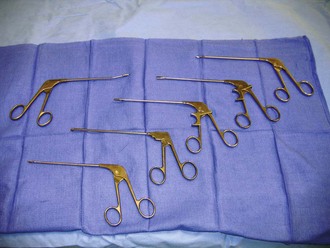Chapter 52 Arnoczky and Warren1 reported on the vascularity of the meniscus, which is divided into three zones: red-red (peripheral 25% to 33%), red-white, and white-white (central 33%). Healing has been found to be more favorable in the vascular zones (i.e., red-red and red-white). Meniscal tears are commonly described by tear pattern. Examples of common tear patterns are illustrated in Figure 52-1. Contraindications are active septic arthritis and significant medical comorbidities. Multiple manufacturers have produced meniscal baskets, biters, graspers, scissors, and arthroscopic shavers. Common instruments needed for arthroscopic meniscectomy are illustrated in Figure 52-2. These include the following:
Arthroscopic Meniscectomy
Preoperative Considerations
Classification
Indications and Contraindications
Instruments
![]()
Stay updated, free articles. Join our Telegram channel

Full access? Get Clinical Tree


Arthroscopic Meniscectomy








